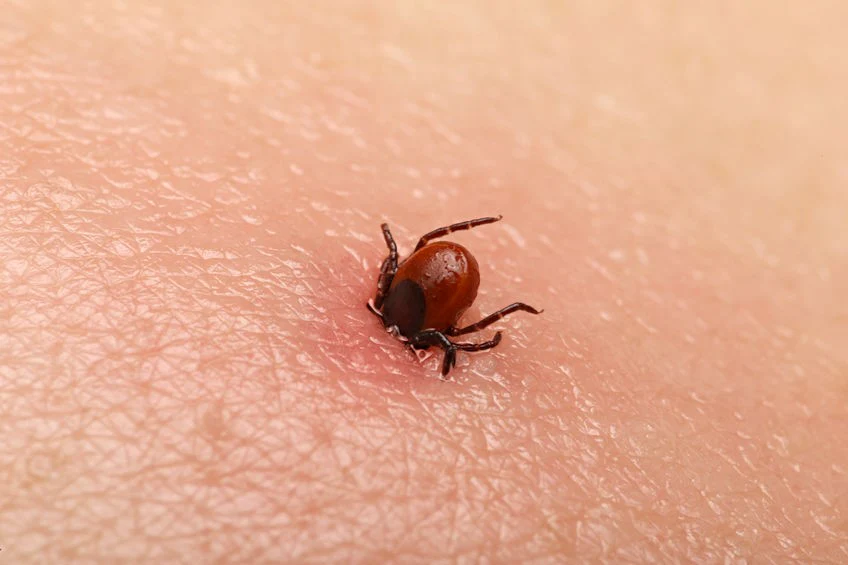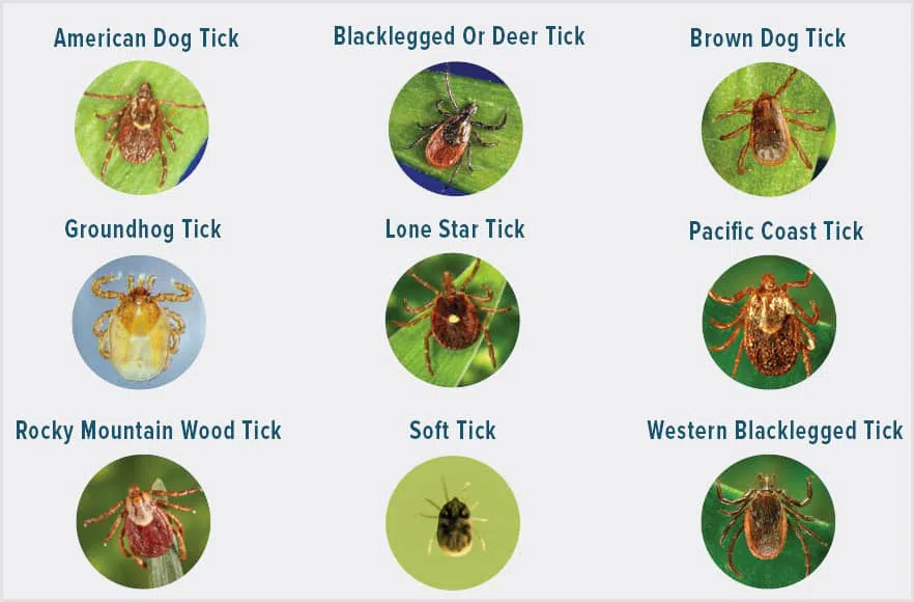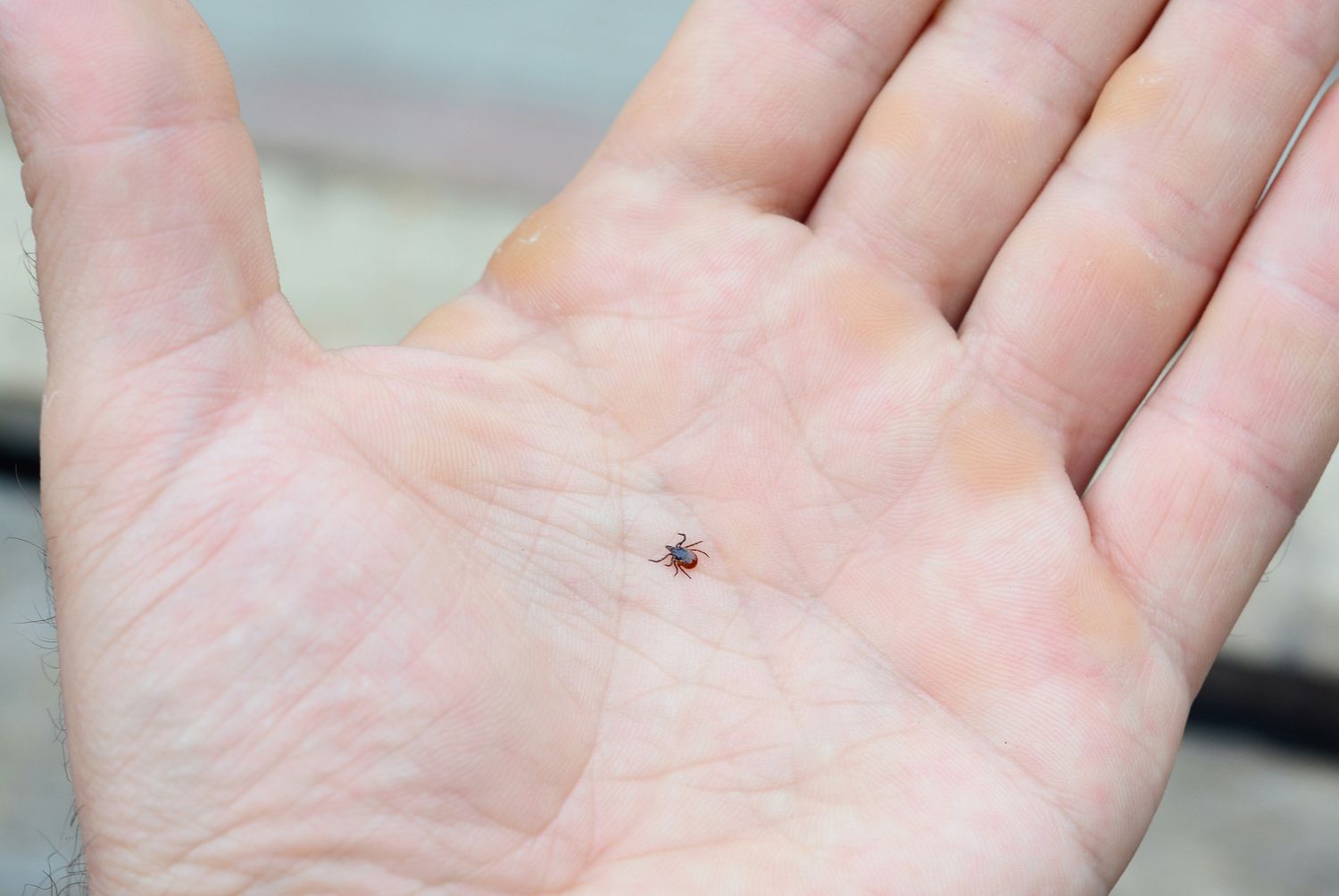Tick Treatments in Florida:
Exterminator Services for Bradenton, Parrish, and Palmetto
Florida’s year-round mild weather and coastal ambiance attract residents and visitors looking to enjoy the sun, waterways, and abundant outdoor spaces. Yet the same warm temperatures and steady humidity also encourage ticks to remain active much longer than in colder parts of the country. Ticks feed on warm-blooded hosts – from family pets to passing wildlife, and even humans when given the chance. If you own a home or run a business in Bradenton, Parrish, or Palmetto, a tick incursion can disrupt daily life, creating health concerns and continuous frustration. This service page explores why ticks thrive in Florida, the clues that warn of an infestation, and why you should enlist a professional tick exterminator to apply proven tick treatments. By responding promptly and thoroughly, property owners can break the tick life cycle and reclaim their yards or living areas.
Why Ticks Prosper in Florida

- Warm, Subtropical Climate
States with cold winters see tick activity wane or halt as temperatures drop. However, Florida’s mild winters rarely produce sustained freezing, allowing ticks to keep feeding and reproducing year-round. While some species slow slightly, they rarely face the climatic extremes that might kill them off or force them into dormancy. - Frequent Rainfall and Humidity
Ticks need moist surroundings to keep their eggs, larvae, and nymphs from drying out. Florida’s consistent rainfall – even outside of the rainy season – helps maintain damp soil or leaf litter that fosters tick development. Moist lawns, shrubbery, or shady corners offer prime habitats for them to wait for passing hosts. - Abundant Wildlife and Domestic Animals
Ticks latch onto warm-blooded creatures, drawing blood meals to progress through life stages. Florida’s environment, with wild animals like raccoons, stray cats, or opossums crossing yards, can introduce ticks to new areas. Similarly, dogs or cats that roam outside frequently risk picking up ticks and bringing them indoors. - Minimal Seasonal Dormancy
In many states, ticks become dormant during prolonged cold spells, suspending breeding. Florida’s moderate conditions typically do not push them into full dormancy. This ongoing cycle means a small outbreak left unattended might develop into a yard-wide infestation across weeks or months. - Ongoing Development and Mobility
Bradenton, Parrish, and Palmetto each showcase expanding residential neighborhoods and consistent movement of residents, pets, and visitors. Ticks easily catch rides on clothing, gear, or animals traveling between properties. Secondhand furniture, or even yard equipment shared among neighbors, might pass along hidden tick eggs or larvae.
Signs of a Tick Presence
- Pets Scratching or Grooming Excessively
Dogs or cats might scratch persistently at their ears, neck, or hindquarters if ticks latch on. Grooming habits can become frantic if multiple ticks bite simultaneously. Checking an animal’s fur with a flea/tick comb or observing unusual restlessness may hint at hidden ticks. - Ticks on Floors or Walls
The brown dog tick, for example, can complete its entire life cycle indoors if it finds suitable conditions. Spotting small, dark, slow-moving bugs on baseboards, behind doors, or in pet areas often suggests an established or enlarging indoor tick issue. - Bites on Humans
Although ticks generally target animals, they bite humans if hungry and close enough to attach. A red, itchy bump – usually around ankles, legs, or waist – might appear, occasionally accompanied by a visible tick still embedded. Swiftly removing ticks with tweezers lowers the risk of pathogen transmission. - Larvae or Eggs in Yard Debris
Ticks deposit eggs in secluded or damp areas such as under leaf piles, around fence lines, or in tall grass. While rarely spotted by casual observers, thorough yard checks might reveal clusters of translucent eggs. Large numbers of newly hatched nymphs can produce a significant biting presence in and around lawns.
Dangers of Unresolved Tick Infestations
- Disease Vectors
Certain ticks carry pathogens responsible for illnesses like Rocky Mountain spotted fever, ehrlichiosis, or, less frequently in Florida, Lyme disease. Though not all ticks are infected, regular bites enhance the risk of infection. Eradicating tick populations helps lower the probability of disease transmission to humans or pets. - Pet Health Complications
Prolonged exposure to ticks disrupts pets’ comfort. Severe infestations cause multiple bites that can lead to anemia in small animals, allergic reactions, or the spread of parasites. Veterinarian treatments for tick-related issues can accumulate quickly if the outbreak remains unmanaged. - Business or Property Image
Commercial establishments, like kennels or rental properties, rely on upholding cleanliness and visitor satisfaction. If ticks appear in these venues, it undermines the sense of security and professionalism, prompting negative reviews or occupant frustration. - Ongoing Stress
Families dealing with repeated tick sightings or bites grow anxious, sometimes avoiding beneficial outdoor activities like gardening or letting pets roam the yard. Eliminating the tick source restores ease and full use of one’s property.
Why Professional Tick Treatments Are Essential
- Complete Inspection
A qualified tick exterminator starts by examining interior rooms, outdoor lawns, shady vegetation, or damp corners, checking for any sign of eggs, larvae, or adult ticks. Recognizing the species (such as the brown dog tick, American dog tick, or lone star tick) can shape the recommended control approach. - Outdoor Management
Because many ticks originate outside, controlling yard habitats is crucial. Removing leaf litter or debris, mowing lawns to minimize shady, damp pockets, and applying insect growth regulators in yard boundaries starves out fleas and ticks before they contact people or pets. By combining chemical treatments in targeted lawn sections with yard upkeep, newly hatched nymphs or eggs are killed promptly. - Indoor Control
For ticks that have established footholds indoors, thorough vacuuming, especially in cracks or along baseboards, lifts hidden ticks, eggs, or larvae. Residual insecticides in key spots (like corners behind doors, pet resting areas, or near baseboards) form a barrier. If pets roam indoors frequently, the exterminator might also treat furniture seams or carpet edges. - Pet Collaboration
Since fleas and ticks thrive largely by feeding on animals, keeping pets on appropriate veterinarian-approved preventatives – such as spot-on treatments or special collars – ensures any ticks that latch on die before reproducing. An exterminator handles the environment, while consistent pet care defends against new arrivals traveling on fur.
Follow-Up
Because tick eggs can hatch weeks after initial treatments, scheduling a re-check or additional yard sprays helps confirm no new wave emerges. Occupants watch for fresh bites or sightings; if evidence surfaces, the exterminator can revisit and adjust measures for thorough elimination.

Service Areas: Bradenton, Parrish, and Palmetto
Bradenton: A city along the Manatee River with a blend of historic neighborhoods and new developments. Shady yards, landscaping debris, and frequent pet-friendly activities can lead to tick concentrations if owners do not address them. Quick detection and yard management keep tick problems minimal.
Parrish: A swiftly growing community featuring suburban enclaves and rural patches. New housing expansions sometimes push ticks closer to dwellings, as farmland or wooded areas get cleared. Regular property inspections and yard adjustments can deter tick migration.
Palmetto: With scenic waterfronts and a relaxed atmosphere, Palmetto sees both older homes and updated constructions. Ticks in green belts or near water sources can wander into yards. Thorough perimeter checks, along with dog and cat care, minimize infiltration indoors.
Why Partner with Our Tick Treatments
- Local Knowledge
In southwestern Florida, mild winters and humid conditions foster year-round tick breeding. Our solutions respond to these factors, offering integrated methods that control ticks inside, in yards, and around common wildlife corridors. - Targeted Precision
Instead of blanket spraying large areas, we isolate tick hotspots—like fence lines, shady corners, pet bedding—and apply insect growth regulators or adulticides accordingly. Occupant safety remains a priority, limiting unnecessary chemical usage. - Comprehensive, Multi-Staged Approach
We reduce adult ticks, disrupt larvae development, and advise owners on how to keep properties less hospitable in the long run. Reducing moisture pockets, cleaning up yard debris, and ensuring pets remain protected helps maintain success. - Follow-Up Verification
Because dormant eggs or pupae might produce fresh ticks post-treatment, scheduling re-checks or additional yard sprays ensures that hatchlings are eliminated quickly. If owners see new evidence of ticks, we refine the approach before they re-establish.
- Local Knowledge

Next Steps
Has your pet started scratching excessively, or have you noticed ticks crawling on floors or yard furniture? Contact us to learn more or schedule your service. Our tick exterminator methods in Bradenton, Parrish, and Palmetto address the complete life cycle of ticks, ensuring a thorough elimination and reducing re-infestation odds. By pairing targeted yard treatments with indoor measures and occupant education, we enable property owners to reclaim their spaces from these persistent parasites.
By acting swiftly, you prevent further tick bites, curb potential disease transmission, and bring relief to pets or family members. A well-chosen and effectively executed plan frees you to enjoy Florida’s sunshine without constantly checking your ankles or your dog’s fur for unwelcome hitchhikers.
Sustaining a Tick-Free Lifestyle
Even the most robust professional treatments benefit greatly from homeowner diligence. Some long-term steps include:
- Routine Lawn Upkeep: Mow grass short and clear leaf litter or brush piles. Ticks hide in shaded, moist areas, so consistent yard maintenance removes prime breeding zones.
- Monitor Pets: Use veterinarian-endorsed tick preventatives like spot-ons, oral chewables, or collars. Check pets regularly for ticks near their neck, ears, or belly.
- Vacuum and Clean: Indoor ticks (especially brown dog ticks) can complete their life cycle inside. Frequent vacuuming of carpets, baseboards, and pet bedding lowers the odds of reinfestation. Dispose of vacuum contents in sealed bags outdoors.
- Manage Wildlife Access: Secure outdoor trash bins, fence yard edges if possible, and minimize open feeding areas that attract stray or wild animals potentially carrying ticks.
- Quick Detection: Keep an eye out for fresh bites, tick droppings, or changes in pet behavior. If any reappear, contact a professional for additional treatments early on.
By adopting these practical measures alongside professional tick solutions, southwestern Florida residents—be they in Bradenton, Parrish, or Palmetto—stay a step ahead of tick-related hazards. With consistent vigilance, integrated yard and indoor pest management, and veterinarian support for pet care, you can better relish Florida’s outdoor beauty without constant tick worries.
